On this page, you’ll find out ten audiobook statistics along with their sources. These statistics cover topics such as:
- Audiobook Industry Size
- Audiobook Market Share
- Audiobook Consumption Habits
- Audiobook File Sizes
- And More!
Let’s get into the stats!
Table of Contents
Audiobook Industry Size
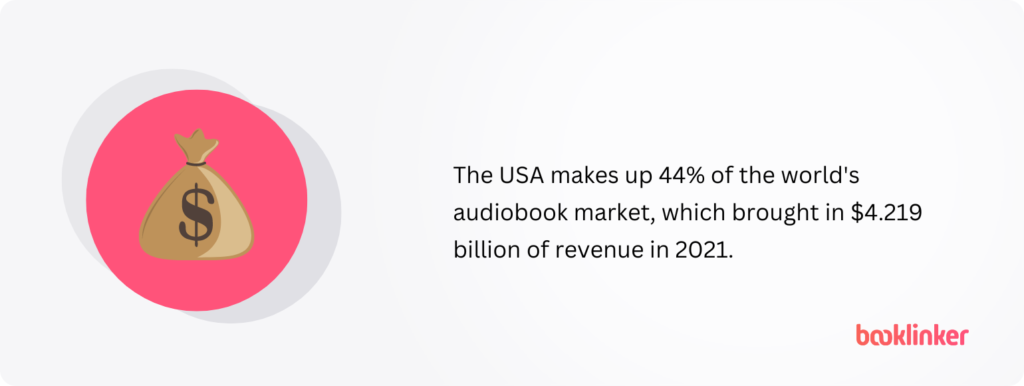
According to GrandviewResearch, the audiobook industry took in annual revenues of $4.219 Billion in 2021. The US audiobook market was responsible for $1.875 billion of that total. GrandviewResearch also predicts the audiobook sector of the book industry is expected to compound at an annual growth rate of 26.4%, from 2022-2030.
Book Sales Type By Market Share
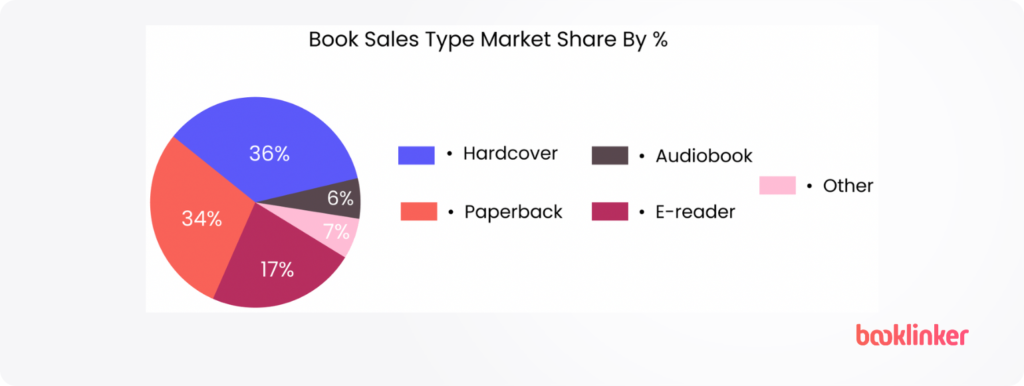
According to The Writing Cooperative, the most popular way to read books as of 2017 are hardcovers, with over 36% market share. Digital forms of reading (audiobook + E-readers) only win 23% of the market.
How Many Audiobooks are Published Per Year?
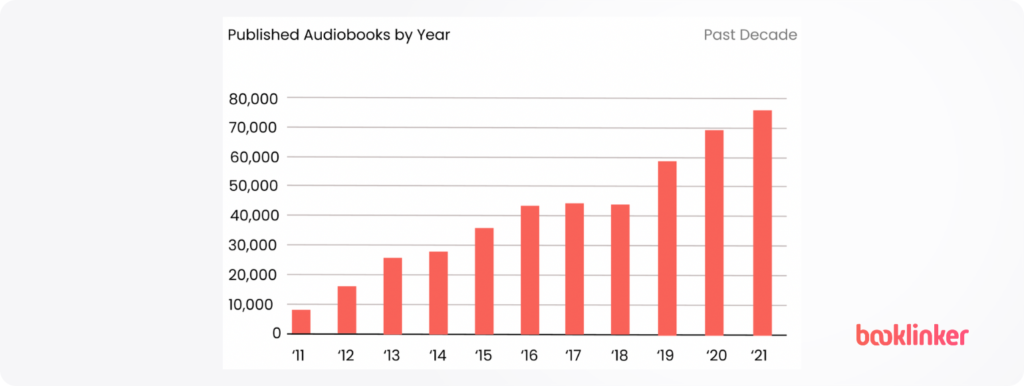
According to Statista, the average amount of audiobooks published each year has generally increased for the past 10 years, up to 74,000 titles in 2021. One of the largest obstacles to releasing an audiobook is narration costs. As this becomes easier over time due to technology, expect this growth trend to continue.
Audible Market Share
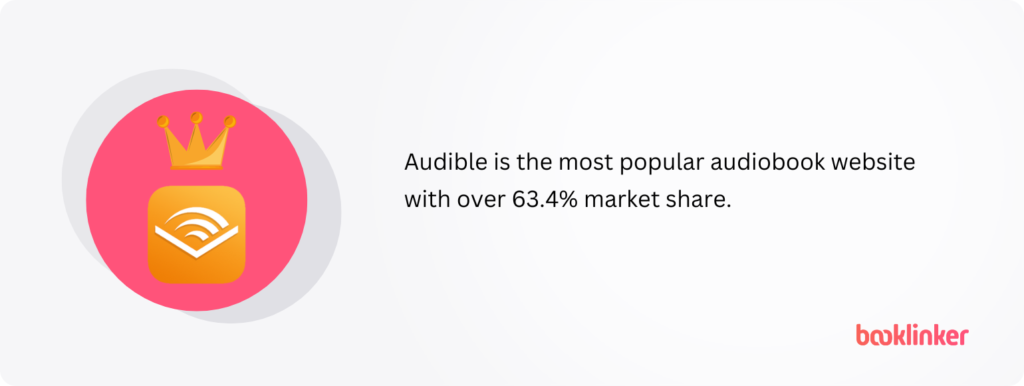
According to IbisShare, Audible has over a 63.4% market share of the audiobook market. Other competitors in the audiobook space include Apple Books, Kobo, Google Play Books, and Blinkist.
Audible Royalty Fees
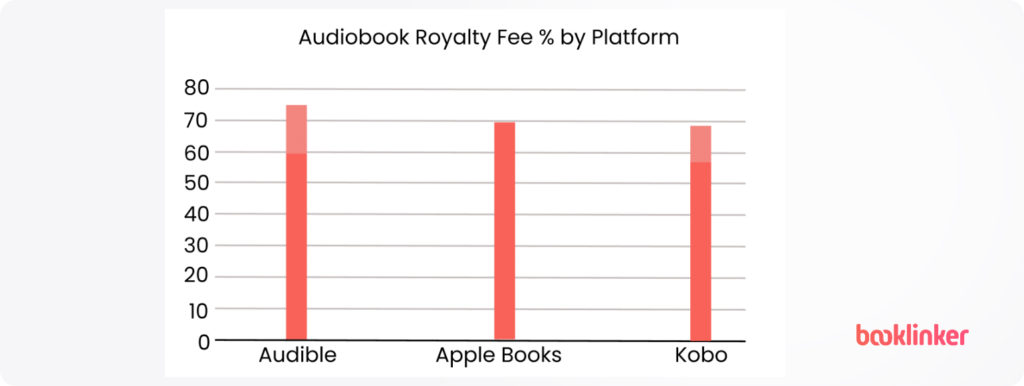
Audiobook royalties vary by platform and incentive structure. Audible takes a 75% royalty fee on any audiobook sale, reduced to 60% if the author decides to sell their book exclusively on the platform.
Apple Books has a standard 70% royalty fee for all books of any kind sold on the platform.
Kobo’s royalty fees vary between 55% – 68%. For books over $2.99, the fee is 55%. Audiobooks under $2.99 have a 65% royalty fee. If a Kobo token is used, there is a 68% royalty fee.
Audiobook Consumption
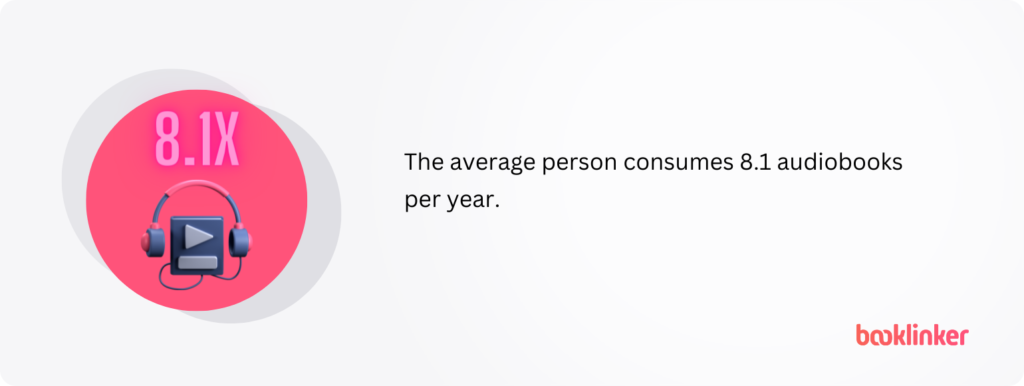
A 2020 survey revealed that the average amount of audiobooks a US consumer listens to per year is 8.1 books. This is significantly lower than the number of books US consumers read per year, at 12.6.
Where People Listened to Audiobooks
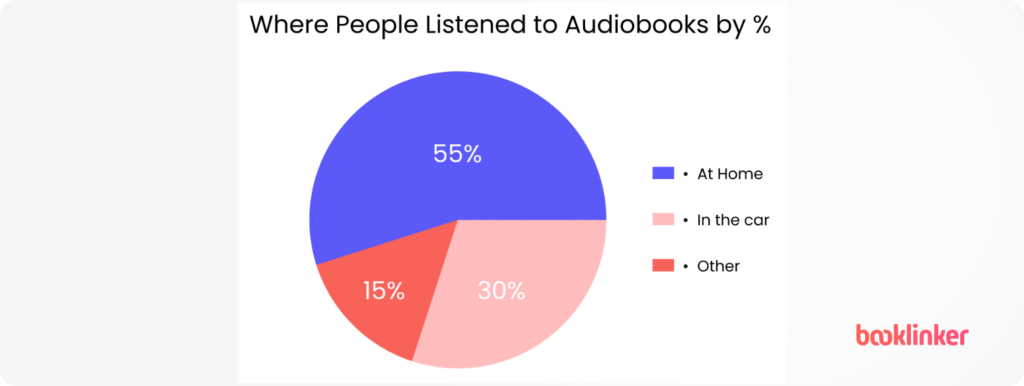
According to a study by Publishers Weekly, over 50% of people listen to audiobooks in their homes. Another 30% did so while driving or in the car, with the remaining 15% doing so elsewhere. In fact, the survey showed that 70% of audiobook users multitask while listening.
Average Audiobook Length
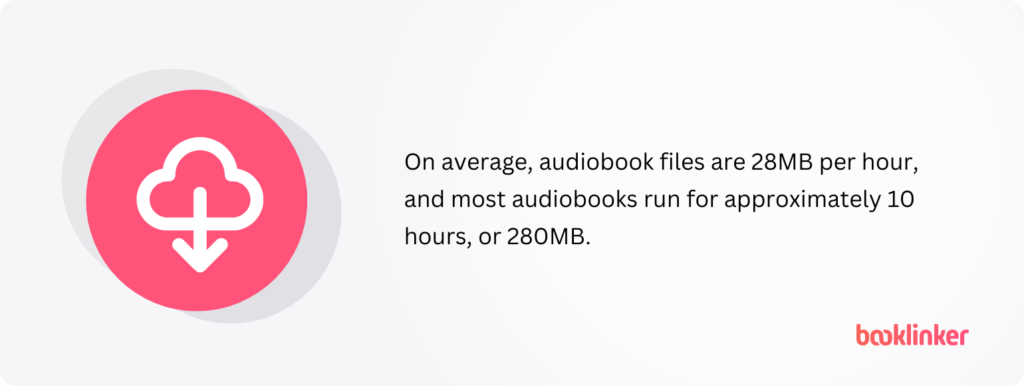
According to Kobo, audiobooks on average are 28MB or 10 hours long. This is compared to the average Kindle e-book size of 300 pages, 75,000 words of text, and 2.6 MB.
Cost of Audiobook Narration
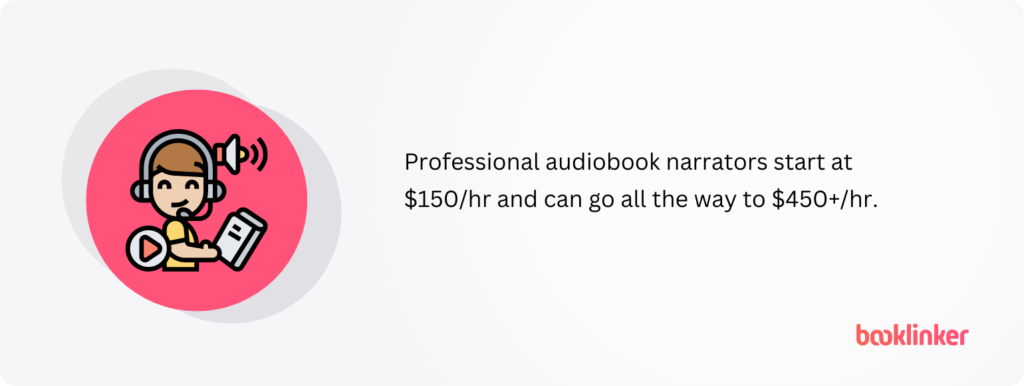
Audiobook narration and production can get pricey. Professional narrators start at $150 per finished hour, with some of the most famous narrators coming out to $450 per finished hour. You’ll also need to hire an audio engineer and editor.
As we learned above, the average audiobook is 10 hours long, so expect to pay up to $5,000 to produce an audiobook. Depending on the number of copies you expect to sell, this may or may not be worth it!
The First Audiobook
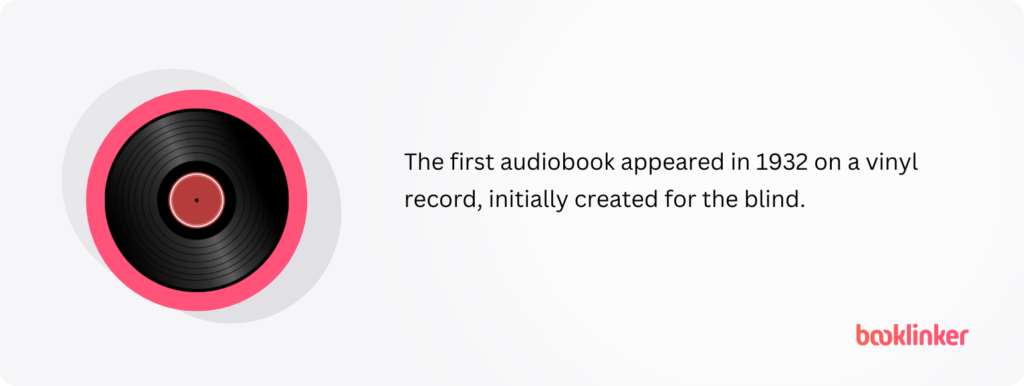
Audiobooks were first released in 1932 on vinyl records by the American Foundation for the blind, in order for blind people to have access to books. Some of the first audiobooks were Shakespeare’s works, as well as the US Constitution.
Conclusion
Now that you’ve read all of these audiobook statistics, you’ll have some more background information about where the audiobook industry has been, where it is now, and where it is headed.
As our world becomes increasingly digital, these statistics show it’s safe to say that audiobooks are growing steadily, and are here to stay.
Do you have any statistics that we should add here?
Let us know in the comments, or shoot us an email at at@geni.us.



